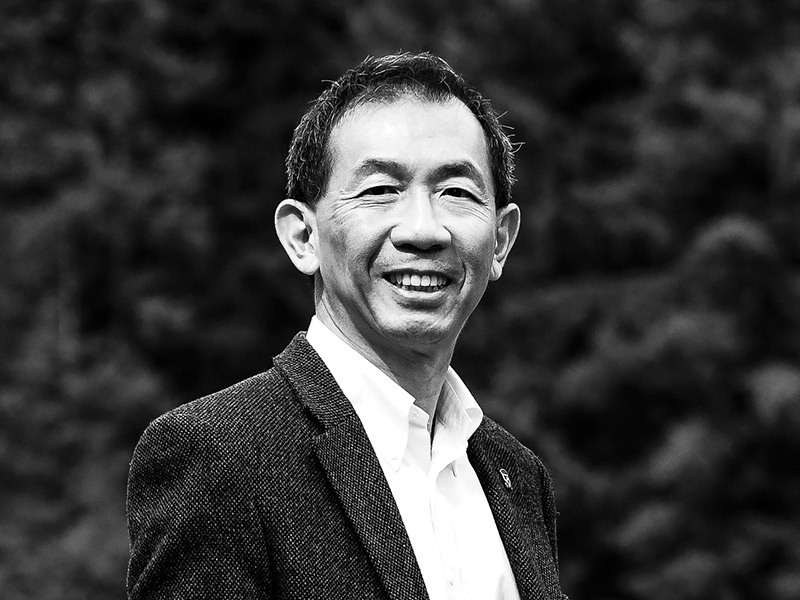

Jacky Shen suspects he was the oldest intern Simon Fraser University’s treasury department ever had.
It was 2007, he was in his early 40s, had just arrived in Canada with his family and was studying for a master’s degree in the university’s wealth management program. As an intern, Shen — now the university’s treasurer and director of investment — joined a department responsible for investing several endowment funds and non-endowment funds that now have net assets of $1.1 billion.
Despite the job title, he was already an industry veteran. Prior to coming to Canada, he spent 15 years in banking and finance in Hong Kong and Taiwan. That experience helped mark him out in the department and, when the assistant treasurer went on parental leave, he was asked to fill in. When the financial crisis of 2008/09 hit, Shen’s position on the treasury team was made official. “They decided to expand the department’s capacity and I became the second assistant treasurer.”
Read: Institutional investors considering geopolitical risk, inflation in portfolio construction
Getting to know
Jacky Shen
Job title:
Treasurer, director of investment, Simon Fraser University
Joined SFU:
2007
Previous role:
Senior vice-president of marketing, HSBC Bank
What keeps him up at night:
Thinking about the best combination of investment products and managers
Outside the office he can be found:
Collecting — and listening to — vinyl records from the 1970s and 1980s
The recession was difficult for SFU’s pension and endowment funds. “Even though we invested in more than 100 different types of securities, they were highly correlated. When I started to look in the book of our custodial statements, I saw one [portfolio] lost close to 60 per cent of its market value at its lowest point. . . . We had to revisit and rethink our overall approach.”
Shen’s first move was to alter the way the university’s portfolios were invested. “We moved away from internal management. About $100 million that had been managed in house was handed over to external managers.”
The team also implemented a new process for choosing its investment managers. Until 2009, SFU’s selection process left it with a “mixed bag” of strategies, he says. “We started looking at the individual strengths and weaknesses of investment managers. We had to find ones able to perform over the longer term.”
When Shen met with prospective managers, he asked for their thoughts on repositioning the battered portfolios. The answers fell broadly into one of two camps: most suggested that, since the markets were in a downturn, SFU wait for its investments to recover before reallocating, while some said that, with everything down, there wasn’t a good reason to wait.
“We went with the latter option — if [an investment] wasn’t performing for a fundamental reason, we should go elsewhere to prepare for the next financial crisis.”
Read: How can past innovators inform portfolio construction today?
Since then, the university’s selection process has favoured managers offering stronger downmarket protections. “That meant we wouldn’t be in panic mode and making unnecessary decisions in down markets.”
Another policy change during the early 2010s was the formalization of a relationship between the university’s treasury team and its investment consultant. “We created a new documentation process to secure its formal recommendation on each issue. We’d bring that to the investment advisory committee.”
In 2012, Shen was promoted to his current role. Over the next five years, he continued to strengthen the department’s investment process. “The portfolio was in place, but the market was evolving and so were the endowments.”
Other challenges were also on the radar. In 2013, the treasury department began discussing the possibility of incorporating responsible investing into its work. “Back then, we had a process to look into new investment initiatives, but RI was new. A lawyer even said it wouldn’t be possible to implement it legally.”
The next year, SFU became one of the first institutions to adopt a responsible investment policy and a responsible investing standing committee. Shen and his team worked closely with the asset managers to ensure they were on the same page. “In 2014, about 60 per cent of our asset managers had some sort of [environmental, social and governance] policy in place. Today, almost all of them have [one]. There’s only one exception.”
Read: Canadian responsible investments holding steady at $3 trillion AUM: survey
The policy was based on the recommendations of the United Nations’ principles for responsible investment — an organization SFU would later champion. “We sponsor semi-annual events it hosts in Western Canada. . . . We share our experiences and promote best practices.”
Since its adoption, the university’s portfolios haven’t experienced any of the economic fallout predicted by naysayers. Between 2014 and 2021, the portfolios’ annual returns hovered around nine per cent and, in 2022, reached above 12 per cent. “I’m grateful to SFU and proud of being able to achieve our responsible investment and investment objectives at the same time.”
Gideon Scanlon is the former editor of the Canadian Investment Review.
